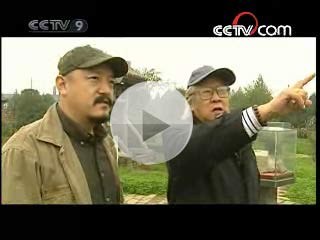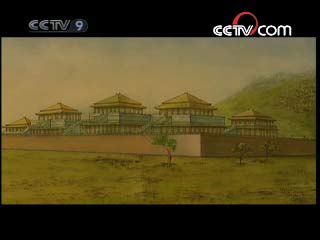------Program code: DO-080806-01133 (what's this?)
Source: CCTV.com
08-06-2008 08:34
 |
Although he has long since retired, Professor Yang Hongxun still leads a busy life. As a lifelong professional architectural archaeologist, Yang’s career just keeps on going.
Leafing through historical records as vast as the open sea, searching for clues on archaic relics and then reconstructing ancient cities, palaces, pavilions and temples through meticulous logical deduction: it is Professor Yang’s work to piece together the shattered fragments of what once was. Because of this, he is known as an avid restorer of history.
 |
The Mausoleum of the First Qin Emperor is one of the many subjects of Yang’s study. According to records, the First Emperor was buried alongside hoardes of rare treasures, as well as a scale replica of the universe complete with gemmed ceilings representing the cosmos. After over two millennia, however, everything has become an impenetrable enigma.
After comparing architectural sketches of The Tomb of King Cuo of Zhongshan, Yang assumed that the Mausoleum of the First Qin Emperor was built around the same period and that they were probably very much identical. The latter was of a larger size, however, because of the superior ruling power of Qin during those times.
Unlike most archaeologists and historians, Yang can sketch out a detailed layout to scale based on his research. If people today were to rebuild this ancient palace, these could act as the professional blueprints.
In the world of construction, Professor Yang is actually an acclaimed architect. “Guizhen Garden” is one of his masterpieces. Probably because of his love and passion for ancient Chinese architecture, having made a name for himself in building design during the 1980s, Yang began to delve into architectural archaeology. More accurately, Yang was, in fact, the founder of Chinese Architectural Archaeology.
The Forbidden City is one of the most complete ancient palace complexs in the modern world. But the highest achievements in ancient Chinese architecture, according to Yang, were not built during the Ming or Qing Dynasties but a thousand years ago during the Tang, two thousand years ago during the Han or even the still earlier Qin. The ancient buildings of these times were inferior in no way to the Forbidden City.
From practical architect to archaeologist, Yang hopes that through his persistence and hard work he can restore ancient buildings that no longer exist. For decades, he has redrawn many wonders of the historical world, including: The Qin dynasty’s Xianyang Palace, the Han’s Weiyang Palace, Sui Jiucheng Palace, and buildings like Hanyuan Hall of Daming Palace, Linde Hall, Dayan Temple, and Mingde Gate in Chang’an from the Tang dynasty.
There was also once a tall temple above the Qin Shihuang Tomb, which is seen by Yang as one of the most excellent examples of ancient Chinese architecture. Relying on vague images in a few old photos, historical records and archaeological findings, Yang was able to recreate the blueprints of the famous mausoleum.
The building above the tomb is a nine-storey tall high-platformed structure that measures 76 meters and covers nearly 250 thousand square meters. The palace has three levels, each of which has three terraces, on which there are, pillars, eaves, roof tiles, and tall walls. Palaces designed in such a way are rare not just in China, but the world over. Based on its grand scale, even the great pyramids of Egypt are no match for it.
This is a man whose life has been the recreation of history. In Yang Hongxun’s eyes, both shattered relics and buried treasure are all markings of life itself. History from two thousand years ago is truly a great source of wonder. He has been trying to revive and better understand the lives created by history.
The Terracotta Army was discovered in March of 1974 by local farmers drilling a well. The warriors are buried alongside the First Emperor to serve and protect him in the afterlife. Like the faint traces of the nine-terraced building built over the mausoleum, when the terracotta warriors were first discovered, they had been almost completely destroyed.
